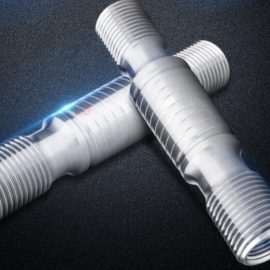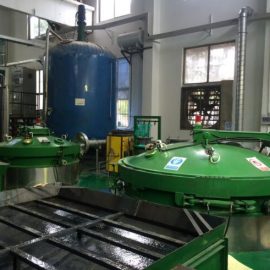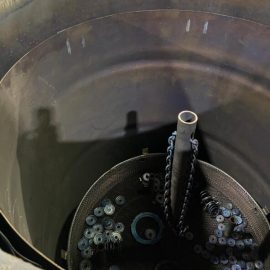Stress Relief Annealing Process for Grey Iron Castings
In order to improve the practical effect of stress relief annealing, the heating temperature should preferably reach the last complete unloading temperature of the casting. Below the last complete unloading temperature, the higher the heating temperature, the more sufficient the stress relief will be. However, if the heating temperature is too high, the structure of the casting will change, which will affect the performance of the casting. For gray iron castings, if the heating temperature is too high, the eutectoid cementite will be graphitized and the strength and hardness of the casting will be reduced. For white cast iron castings, if the heating temperature is too high, the eutectoid cementite will also decompose, which will greatly reduce the hardness and wear resistance of the castings.
The heating temperature of ordinary gray cast iron stress relief annealing is 550℃. When the cast iron contains alloying elements that stabilize the matrix structure, the stress relief annealing temperature can be appropriately increased. Low alloy gray cast iron is 600℃, and high alloy gray cast iron can be raised to 650℃. The heating rate is generally 60 to 100°C/h. The holding time can be calculated according to the following empirical formula: H = casting thickness/25+H’, where the unit of casting thickness is mm, the unit of holding time is hours, and H’ is selected in the range of 2 to 8. Castings with complex shapes and requiring adequate stress relief should take a larger H’ value. The cooling rate with the furnace should be controlled below 30℃/h. Generally, the castings are cooled to 150-200℃, and the castings with complex shapes are cooled to 100℃.
Table 1 lists the stress relief annealing specifications for some gray iron castings for reference.
|
Casting category |
Casting Weight (T) |
Casting Thickness (mm) |
Heat Treatment Specifications |
|||||
| Loading temperature
℃ |
Heating speed
℃/hour |
Annealing temperature
℃ |
Heating preservation
hour |
Cooling speed
℃/hour |
Discharge
Temperature ℃ |
|||
| Blower racks and other complex shape castings |
> 1.5 |
>70 | 200 | 75 | 500~550 | 9~10 | 20~30 | < 200 |
| 40~70 | 200 | 70 | 450~500 | 8~9 | 20~30 | < 200 | ||
| < 40 | 150 | 60 | 420~450 | 5~6 | 30~40 | < 200 | ||
| Lathe bed and other similar castings |
> 2 |
20~80 |
< 150 |
30~60 |
500~550 |
3~10 |
30~40 |
180~200 |
| Small size lathe and other similar castings |
< 0.1 |
< 60 |
200 |
100~150 |
500~550 |
3~5
|
20~30 |
150~200 |
| Simple castings | < 0.3 | 10~40 | 90~300 | 100~150 | 550~600 | 2~3 | 40~50 | <200 |
| Textile machinery
small castings |
< 0.05 |
< 15 |
150 |
50~70 |
500~550
|
1.5 |
30~40 |
150 |

Effect Of Magnetic Field Annealing On Structure And Properties Of Soft Magnetic Materials 20Cr2Ni4 Steel Gear Carburizing and Quenching Process Study Effect of Annealing Temperature on Microstructure and Mechanical Properties of Nanocrystalline Copper




Contact us
Your email address will not be published. Required fields are marked *